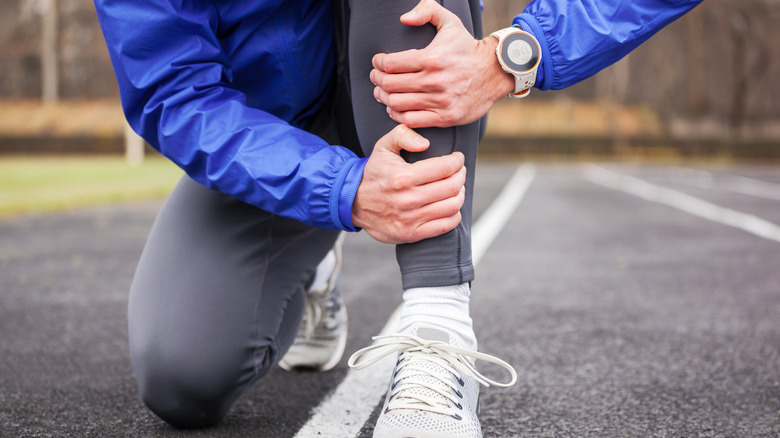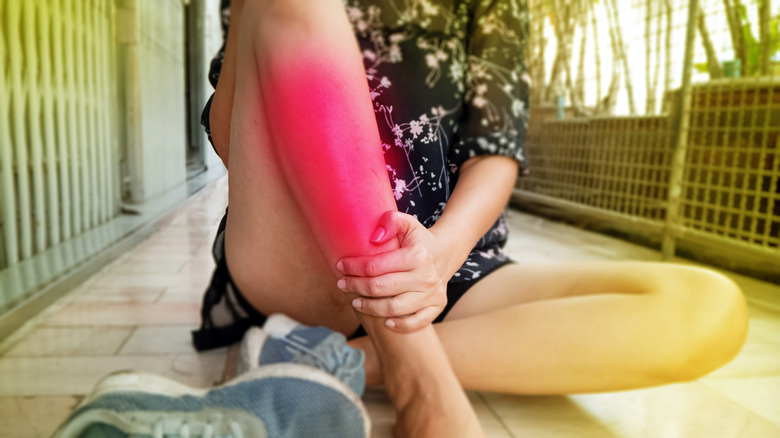What It Really Means When Your Shins Hurt
You have two bones in your lower leg — the tibia, the more prominent inner bone, and the fibula, the smaller outer bone. Your shin is your tibia bone or shin bone. It's important to recognize pain in this region early so you can treat it before it gets worse (via the American Academy of Orthopaedic Surgeons).
Some common causes of shin pain are overtraining, running longer, and running on hills. Your shoes can also cause shin pain if they're too old or don't support your feet well enough. You may need a different type of running shoe than your best friend. Poor balance and stiff knee or ankle joints can also lead to shin pain. If you can move your joints past the normal range of motion, you might have hypermobility, which can also cause shin pain. Another cause could be low bone density (via OneWelbeck Orthopaedics).
What's another common cause of shin pain, and do you have it?
Shin pain cause
A common cause of shin pain is shin splints. According to MedlinePlus, the pain is from muscle, tendon, and bone tissue inflammation and irritation around your tibia. Shin splints, also called medial tibial stress syndrome, are a common overuse injury for runners, dancers, and gymnasts. The Cleveland Clinic adds that people in the military and those with osteoporosis are also prone to shin splints. If shin splints go untreated, they will likely turn into stress fractures.
Running and jumping puts repetitive stress on the shin bone from the muscles and tendons pulling on the bone. This is fine if there is enough time to allow for it to heal, but if you continue running and jumping with this minor injury, it will turn into shin splints. You're more likely to get shin splints if you're new to running or another sport, if you advance your current routine too quickly, or if you've been resting an injury and go back to your regular exercise routine (via the Cleveland Clinic).
Runner's World recommends icing your shins three times a day for 15 minutes each time and immediately after running. First, however, you need to rest and allow your shin splints to heal, so it's best to stop running until they're healed, which can take two to four weeks. While recovering, you can do some non-impact exercises like swimming or walking.


